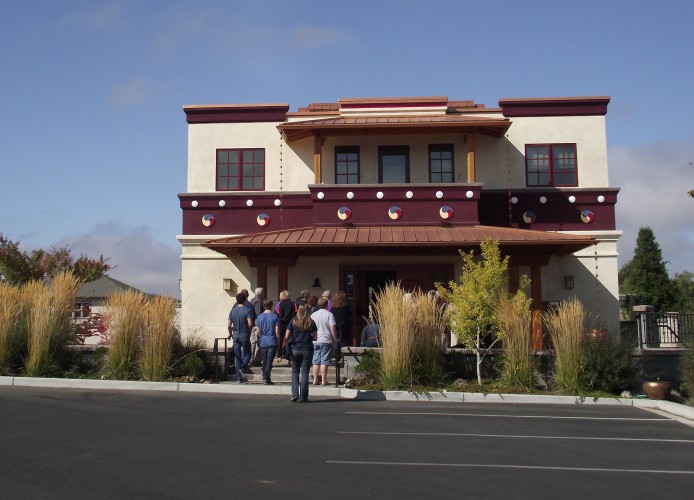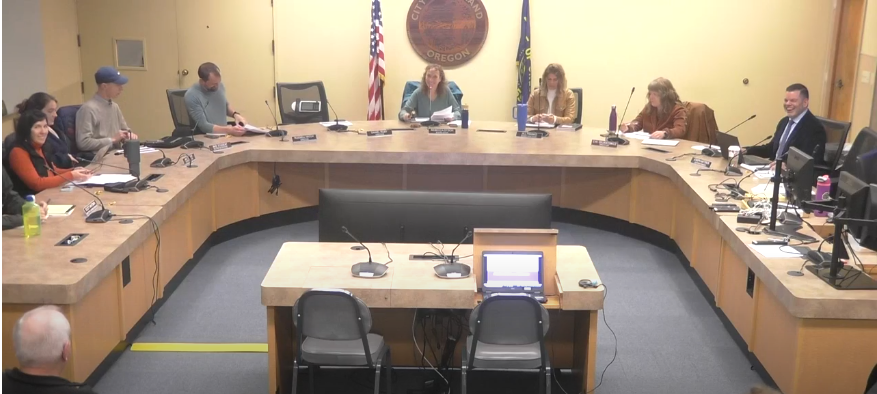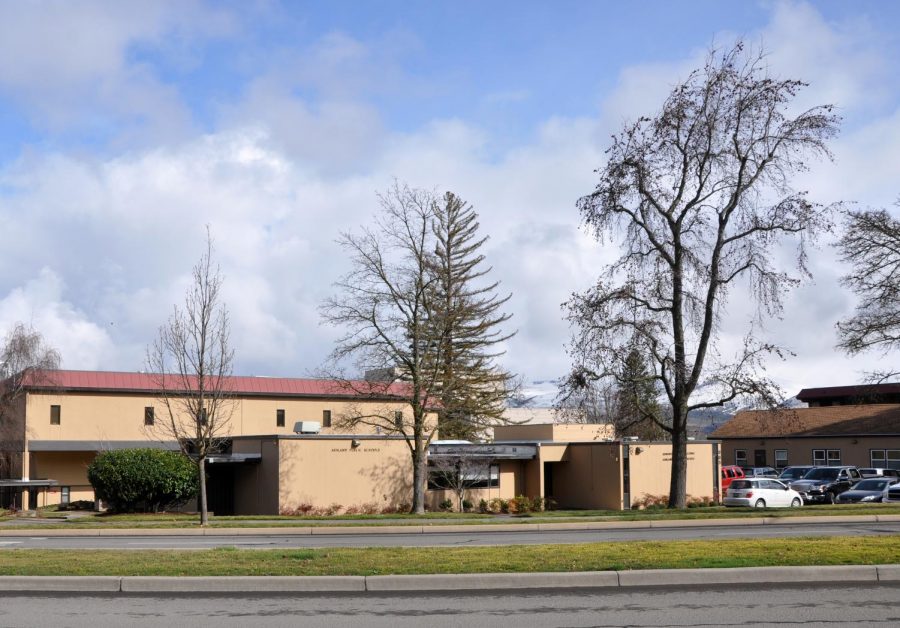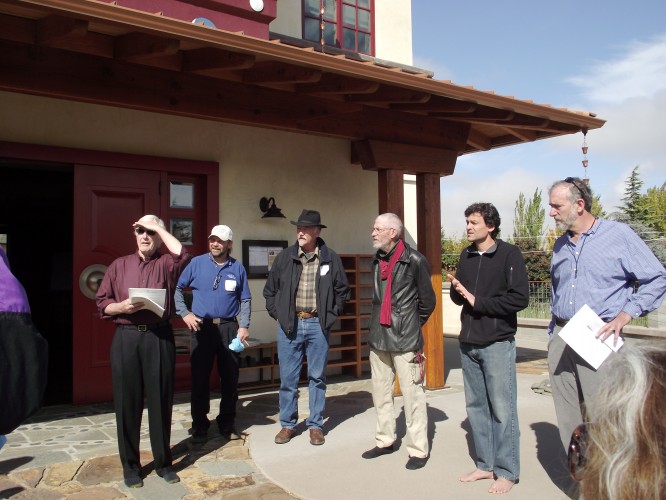
The globe is heating up, and nobody cares. Climate change is an issue which, for it’s level of importance, does not get enough attention. That’s often how it seems at least. Washington refuses to cross partisan lines and our nation still appears to be headed for disaster, but Ashland is trying to change that, one house at a time.
Around thirty years ago a group called Sunergy was formed to demonstrate successful solar energy around Southern Oregon. The group was the first of its kind in the Applegate Valley. In the beginning, Sunergy was limited to tours of solar powered homes, and it began to fade into oblivion. However, after about twenty years, the program was taken up by Mr. Larry Giardina, and the city of Ashland paid Sunergy to perform tours of green-energy buildings around the city, an expansion on their previous effort. The goal was shifted from promoting solar cells to promoting general environmental improvements, such as advanced heating and cooling systems and the use of local materials. This year was its tenth anniversary running tours in the valley, and it has only gotten more popular since it first began. For its tenth anniversary, the tour featured four very interesting buildings. These included a peaceful Buddhist temple off of Oak Street and the private residence of a citizen who embraced new-age energy efficient techniques and local resources in the construction of his home.
[heading bg=”#fffff” color=”#222222″]Kagyu Sukha Choling Temple[/heading]
The Tibetan Buddhist temple: a place of meditation, serenity, and green energy? Buddhism is a religion of pacifism, a religion of self-control, a religion of respect for the world which you inhabit. Buddhist monks believe in limiting their impact on the planet as much as possible. As such, the first urban Tibetan Temple built in the United States in the past decade was a perfect experimental template for various green techniques and technology. The beautifully styled recycled concrete building was built with the goal to use environmentally conscious materials and techniques which not only match current standards, but exceed them by almost ten years. The architects were extremely successful, keeping energy costs near 65 cents per square foot. This makes the temple a shining example of retrofitted green energy and conservationist techniques.
There is a wetland which disposes of waste from the surrounding area, mainly the shared parking lot, with no environmental damage. The walls of the building are super-insulated so that they can resist heat exchanges. However, the most unique part of the temple complex is its low energy, carbon-neutral air conditioning system. The system is fueled by several fans in the attic that siphon large amounts of air out of the building using little energy and create a draft which circulates air throughout the temple. It effectively keeps the building at a temperature of 76 degrees despite the outside temperature thanks to the attentive efforts of the building’s caretakers.
[heading bg=”#fffff” color=”#222222″]Green Home [/heading]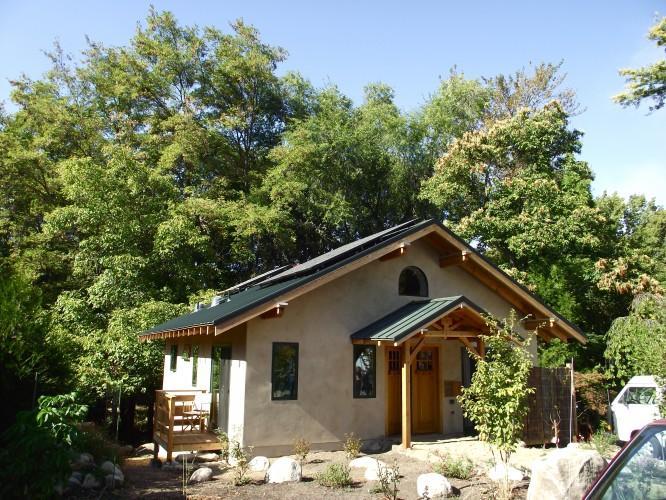
The next sight visited was the house of Barry Peckham. Mr. Peckham has lived on his property since the ’70s and played an active role in the construction of his current home. This house is, like the temple, super-insulated with a mixture of straw and clay used to build foot thick walls which resist thermal movement. He rarely ever needs to manually heat or cool his house; however, for what little need he has, there are water coils, tubes and pipes which move either hot or cold water around the house. These serve to either siphon or deposit heat to change the house’s temperature. This is by far the most efficient way to heat or cool a house.
Finally, for Mr. Peckham’s electricity, the roof is installed with a series of large solar panels and solar water heaters. The house is almost entirely self-sustainable. Mr. Peckham made it his mission to use all local materials in the construction of his new home. The building is made of wood, all of which came from local arborists who would call him when they would fell a tree. If Mr. Peckham liked the quality of the wood, then he would take it to local mills to be processed. Through this process, he was able to use local, high quality timber at a low cost without leaving much of an ecological footprint.
[heading bg=”#fffff” color=”#222222″]What can I do?[/heading]
These two homes are the paragons of visually-appealing, yet futuristically sustainable housing, but who’s to say that sustainability is only for the select few with the means? Anyone can follow simple steps to make their energy usage more efficient and decrease their energy bills. For instance, creating a passive air conditioning system is as simple as putting a powerful fan on one end of your house and opening a window on the other, as well as opening your windows only on your house’s shady side while closing the windows in the mid-day. By doing this, you can save some cash, protect your environment, and just have a very unique method of cooling your house.
Who knows, perhaps one day you can be featured in the tour as a leader in green energy!

